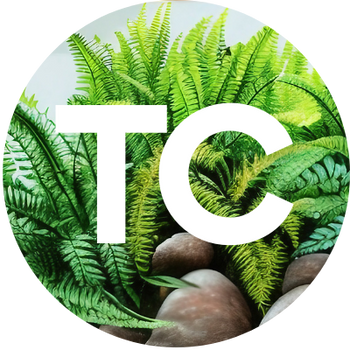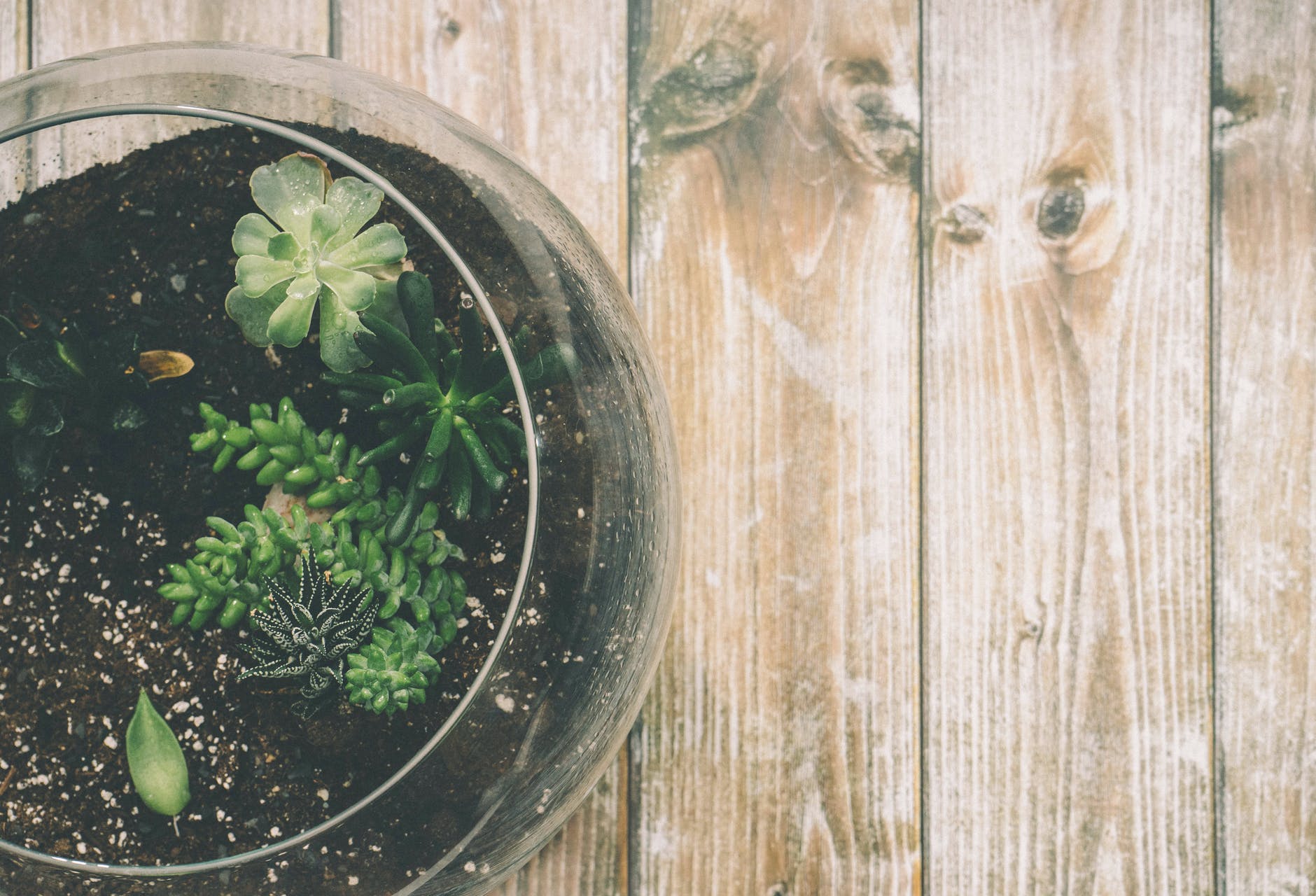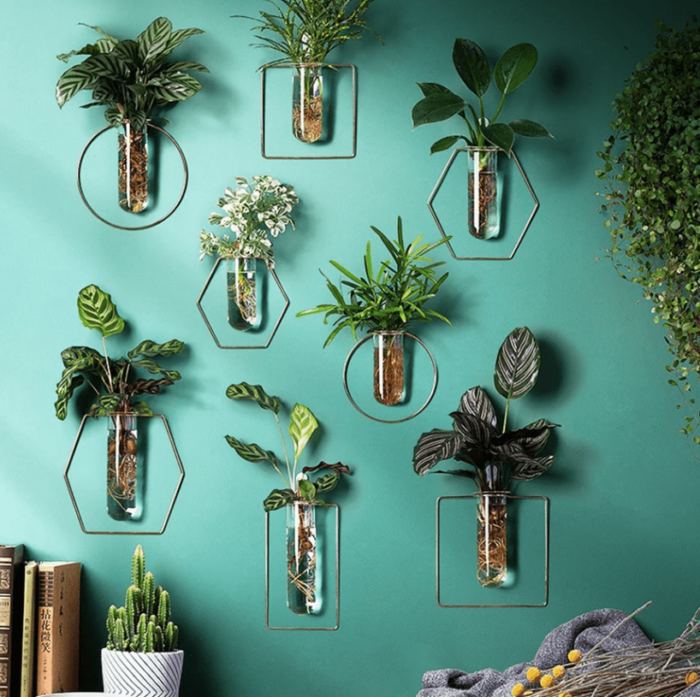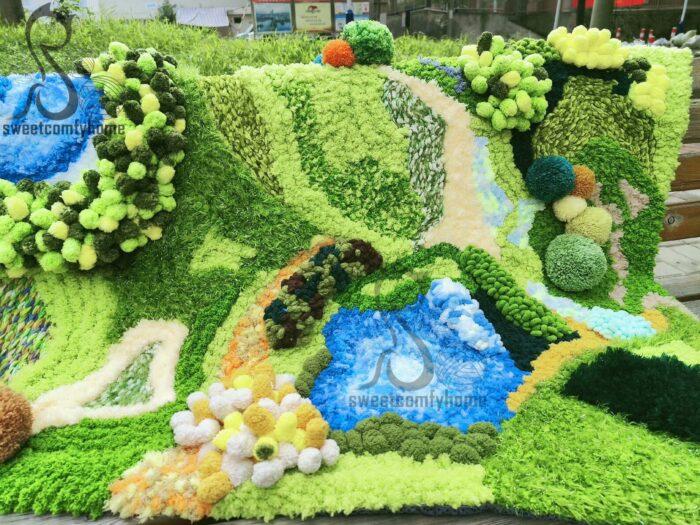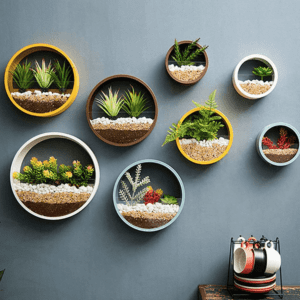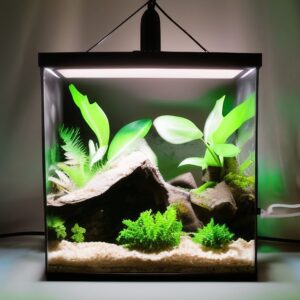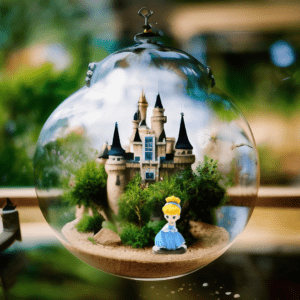A little bit about terrariums…
Terrariums are sealed transparent globes or similar containers in which plants are grown and carefully placed to create unique garden biomes and miniature gardens.
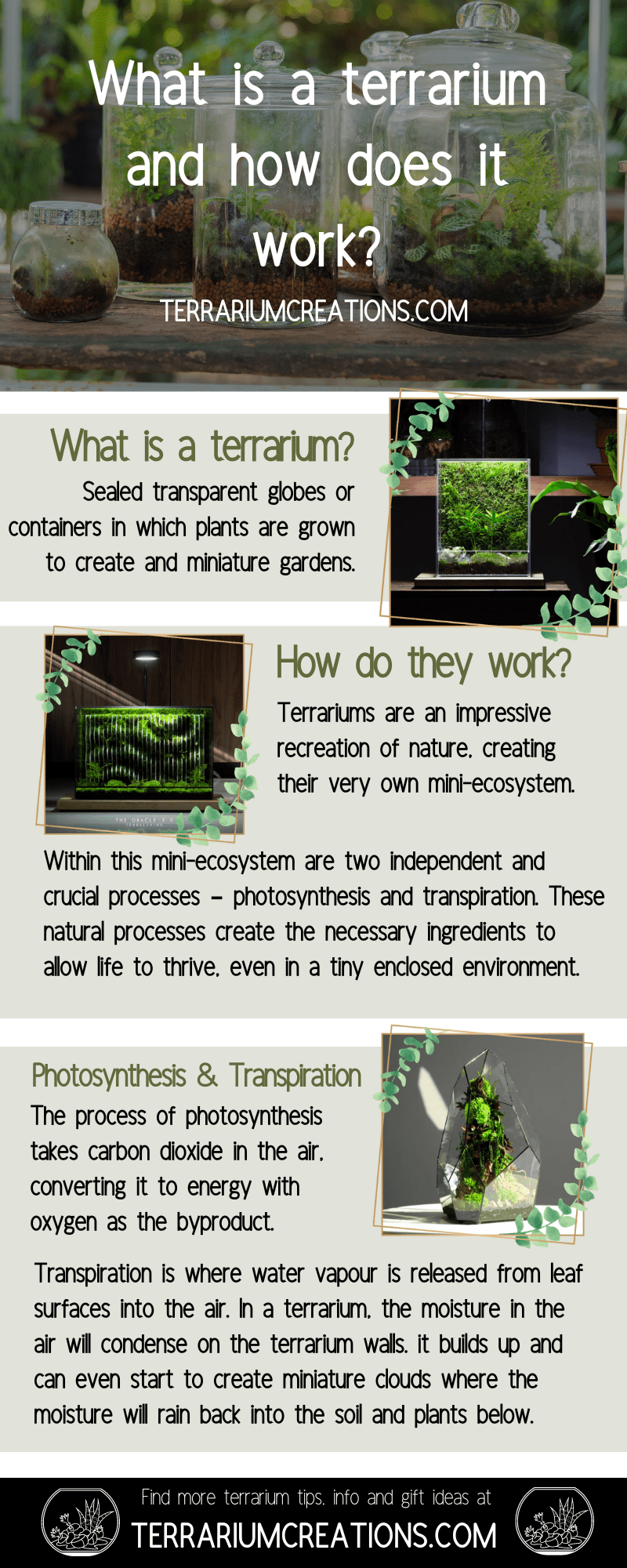
What plants work best in terrariums?
Popular choices for terrarium plants include ferns, succulents, epiphytes (plants that grow on other plants & materials), moss, vines, tropical plants, and even bonsai trees. Check out our Terrarium Plant Library for some well-suited plants for terrariums.

How do terrariums work?
Terrariums are an impressive recreation of nature, creating their very own mini-ecosystem.
A closed terrarium creates a natural ecosystem where the warmth of the natural sun and light causes the water in the soil and from plants to evaporate into the air. Water then condenses on the terrarium walls and falls back to the soil at the bottom of the terrarium. This process repeats as a self-sustaining ecosystem.
Within this mini-ecosystem are two independent and crucial processes – photosynthesis and respiration. These natural processes create the necessary ingredients to allow life to thrive, even in a tiny enclosed environment.
The Photosynthesis Process in Terrariums
Photosynthesis is one of the most important processes on the planet, and an essential process within a terrarium environment. Photosynthesis converts the sun or light source to energy which is then used by the plants for growth. The process of photosynthesis takes carbon dioxide in the air, converting it to energy with oxygen as the byproduct. In a terrarium, it is important not to provide too much light, as terrariums are prone to heating up quickly. Instead, bright indirect light is just right for most terrariums to keep plants happy, healthy, and thriving. It is also worth keeping in mind that as a terrarium is space limited, the reduced light and limited nutrients slow growth, keeping plants a little more compact than they might usually be.
The Respiration Process in Terrariums
Enclosed terrariums are able to create their own rain cycle and respiration process. When the right amount of moisture is introduced into an enclosed terrarium, often through misting, a rain cycle can begin. Plants in the terrarium soak up the moisture via the root system, which then travels through the plant and to the leaves. Transpiration then occurs, which is the process where water vapour is released from leaf surfaces, evaporating into the air. In a terrarium environment, the moisture in the air will condense on the terrarium container glass. As more and more moisture lands on the walls of the terrarium, it builds up and can even start to create miniature clouds where the moisture will rain back into the soil and plants below. This process will continue and repeat if the moisture in the terrarium is unable to escape, hence why terrariums are often self-sustaining or require little maintenance.
Terrarium Care Guide – Simple tips and tricks to get started with terrariums
Interested in terrarium care? Check out our Terrarium Care Guide and Terrarium Plant Library.
